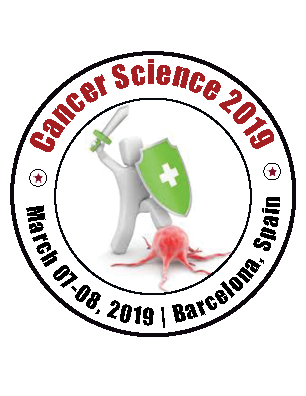
Colin Paul Spears
California Northstate University College of Medicine, USA
Title: Standardized approach for comparison of therapeutic, mutagenic, and environmental alkylating agents in protic media
Biography
Biography: Colin Paul Spears
Abstract
Introduction: The nitrobenzylpyridine (NBP) reagent has been used for over half a century as a screening nucleophile for detection and qualitative assessment of aliphatic nucleophilic substitution by primary and secondary alkyl substrates, therapeutic and mutagenic. These include all classical alkylating agents, ethyleneimines, alkyl sulfonates and sulfates, and alkyl halides and epoxides. The poor water solubility of NBP has prior been approached using non-protic binary reaction media and organic solvent extraction of quaternized-NBP product that is then alkalinized for chromophore absorbance measurement.
Methods: We developed a one-pot protic reaction media method for a truly quantitative, standardized method of alkylating activity measurement of a wide range of therapeutic and model mutagenic, and environmental moieties likely to be susceptible to aliphatic nucleophilic substitution, using 2% NBP in isopropanol (IPA), in 48% IPA-aqueous media with Tris-HCl pH 7 at 70oC, and in situ alkalinization with triethylamine (TEA). This approach was adapted for log[Ky/Knbp) values for NBP chromophore product competition with model nucleophiles, Y, for determination of Swain-Scott s-constants and nucleophilic selectivities by the Spears method. First-order half-lives of reaction of substrates with NBP and the extent of maximal alkylating activity were determined for all moieties. Values of log [Ko/Knbp] or n-constant intercepts were used to estimate rates of hydrolysis.
Results: Our approach capitalizes on the solubility of NBP in aqueous IPA, Tris HCl pH 7 at concentrations below reaction with alkyl substrates, and remarkable stabilities of alkyl-NBP products at prolonged incubation, with stable chromophore on in situ TEA alkalinization, and a lack of significant variation in extinction coefficient of alkyl-NBP products. We present results for a first time comparison of mono- vs. bis-functional substrates for alkylating activity among a broad range of therapeutic agents, and for comparison with model mutagens, and environmental moieties, which provide new insights into dosimetry and alkylating agent classification, and mechanistic considerations of nucleophilic substitution.

